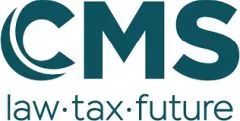Bringing you monthly news of key developments in intellectual property law.
Enercon Gmbh v OHIM, T-472/07, General Court (Sixth Chamber), 3 February 2010
The General Court upheld an OHIM decision to refuse the registration as a Community Trade Mark ("CTM") of the word 'ENERCON' by Enercon Gmbh ("Enercon"). The mark was rejected following an opposition by Hasbro Inc ("Hasbro"). Hasbro claimed likelihood of confusion with its CTM, 'TRANSFORMERS ENERGON,' in connection with identical products in the same class.
For the full text of the decision, click here .
O2 (Germany) GmbH & Co. KG v OHIM, EU General Court, 10 February 2010
The EU General Court annulled a decision of the OHIM Board of
Appeal which had rejected an application of O2 Germany to register
the word sign 'HOMEZONE' as a Community trade mark for
telecoms related goods and services in class 9, 38 and 42.
The Board of Appeal had found that the sign 'HOMEZONE'
lacked distinctive character and consisted exclusively of signs,
which could designate the characteristics of the goods and services
concerned. The EU General Court overruled this decision stating
that the Board of Appeal had failed to justify its conclusions
since it did not assess the distinctiveness of the sign itself but
merely referred to examples given by the examiner in support of his
reasoning.
For the full text of the decision, click here.
Nanjing Automobile (Group) Corporation & Ors v MG Sports and Racing Europe Limited, William James Riley, High Court, 19 February 2010
The High Court upheld a claim for trade mark infringement and passing off in favour of Nanjing Automobile Group ("NAG"), who were the purchasers of most of the assets and trade marks of MG Rover Group, in particular the trade marks that are associated with the famous MG Sports car. The Judge rejected the Defendants counter-claim for orders revoking the trade mark registrations in NAG's name.
For the full text of the decision click here .
Rahmi Özdemir, residing in Dreieich (Germany) v Office for Harmonisation in the Internal Market (Trade Marks and Designs) (OHIM) and Aktieselskabet af 21. November 2001 Case T-11/09
The EU General Court (formerly the CFI) has upheld an OHIM Board of Appeal decision that there was a likelihood of confusion under Article 8(1)(b) of the CTM Regulation (40/94/EEC, now replaced by 2009/207/EC) between the Community trade mark (CTM) for JACK & JONES and a proposed CTM for JAMES JONES, for clothing in class 25. The court confirmed that the board was correct to find that the marks were similar visually and phonetically, and relatively similar conceptually.
The Court agreed that taking into account that the marks comprised a very short first word, the first two letters of which were identical, and an identical second word, the difference attributable to the ampersand in the CTM was not enough to conclude that the marks were dissimilar. The court reached a similar conclusion in relation to the phonetic similarity: the ampersand was commonly used and would not be very striking phonetically. In relation to conceptual similarity, it was conceivable that consumers might interpret the marks as referring to the same person. The court concluded that as the goods were identical, the marks similar, and the average consumer's level of attention would not be high, there was the requisite likelihood of confusion.
For the full text of the decision, click here .
PATENTS
Research in Motion UK Limited v Motorola Inc [2010] EWHC 288 (Pat) 3 Feb 2010.
This patent infringement and invalidity case resulted in a finding of non-infringement and invalidity of the patent in suit. It is interesting because of the Arnold J's remarks in respect of construction, the application of the identification of an infringement under Section 60(1)(2) and the common general knowledge held by the skilled person.
For the full text of our Law-Now on this decision, click here.
Nokia GmbH v IP Com/ IPCom v (1) Nokia UK Ltd (2) Nokia Corporation [2009] EWHC 3482 (Pat)
In consideration of disclosure, construction, infringement, insufficiency and patentability, the approach adopted by the High Court in these two patent infringement/invalidity cases follows the normal course. However, the judgement by Floyd J is noteworthy in as much as the documents cited by the counterclaimant to invalidate them were the industry standards for GSM and GPRS and, as such, were deemed to be common general knowledge.
For the full text of our Law-Now on this decision, click here .
Court of Appeal decision in Alan Nuttall Limited and Fri-Jado UK Limited and another - 24 November 2009
The Court of Appeal has dismissed an appeal from the decision of the High Court that a patent for a cabinet for the display of hot food items, which used an air curtain at the front of the cabinet to permit customers easily to take food items whilst maintaining the temperature in the cabinet, was valid and infringed. In reaching its decision, on the issue of obviousness, the Court of Appeal in a unanimous judgment said that obviousness was very much a question for the trial judge and an appellate court should only interfere if the trial judge had reached a decision, which was plainly untenable. In this case, the Court of Appeal found that the trial judge had directly himself correctly at law so there was no reason for the Court of Appeal to interfere.
For the full text of the decision, click here .
Virgin Atlantic v Premium Aircraft, Court of Appeal, 21 December 2009
The Court of Appeal has refused to stay an enquiry into damages for patent infringement pending a decision on validity by the Technical Board of Appeal. However, it allowed a carve out to the terms of a final injunction, subject to conditions, to allow the infringer to fulfil an order for a relatively small number of further infringing items.
For the full text of the decision, click here .
Neutrokine-alpha/HUMAN GENOME SCIENCES INC., T 0018/09 - 3.3.08, 21 October 2009
The Board of Appeal of the EPO has allowed an appeal from the decision of the opposition division to revoke a European patent for the protein known as Neutrokine-α. In particular, the board held that there was sufficient disclosure in the patent to satisfy the requirement for patentability that the invention is "susceptible of industrial application". This appeal was expedited at the request of the Court of Appeal, who were due to hear an appeal from the High Court decision holding the UK equivalent of this patent invalid.
For the full text of the decision, click here .
Eli Lilly and Company v Human Genome Sciences Inc. [2010] EWCA Civ 33, 9 February 2010
Jacob LJ upheld the decision of Kitchin J that the
patent-in-suit was invalid for lack of industrial application. A
patent to an isolated gene sequence without a plausible and precise
disclosure of how it can be used is contrary to Art. 52 EPC.
The court held the patent invalid despite the EPO Board of Appeal
holding that the patent was valid just a few months earlier. Jacob
LJ emphasised that while the UK courts follow any principles of law
clearly laid down by the Boards of Appeal, they "are not bound
to follow, or even give deference to, the Board's findings of
fact". He reviewed and applied the legal principles
established by the Boards regarding industrial application but
stressed that the Boards repeatedly held that each case must be
decided on its own facts. Preferring the findings of fact of
Kitchin J to the Board of Appeal's, Jacob LJ stressed that the
High Court's scrutiny of evidence is more thorough and that the
Board's decision rested partly on evidence not before the UK
courts. He also respectfully disagreed with specific findings of
the Board.
For the full text of the decision, click here .
Actavis UK Ltd v Novartis AG, Court of Appeal 17 February 2010
The Court of Appeal upheld the High Court's decision
that
Novartis' patent for a sustained release formulation of
fluvastatin was obvious. The problem presented in the patent was
illusory – it was not a problem because fluvastatin is
not so highly soluble that the skilled person would expect it be
impossible or difficult to make a sustained release form. The Court
provided a detailed analysis of obviousness in the UK Courts and
compares the approach in the UK to the problem-solution approach
used by the EPO.
For the full text of the decision, click here .
OTHER
Company Names Tribunal Issues Practice Note on "Without Prejudice Material" – 11 Feb 2010
The Company Names Tribunal has published a practice note on whether negotiations between a holder of a company name and a party wishing to object to the registration should be considered 'without prejudice' and hence excluded from consideration as evidence in the subsequent determination of the case at the Company Names Tribunal.
For the full text of this practice note, click here .
New legislation to implement simplified customs procedure laid before Parliament
The Goods Infringing Intellectual Property Rights (Customs) (Amendment) Regulations 2010 (the 2020 Regulations) have been laid before Parliament. The 2010 Regulations are intended to bring the UK customs procedures fully into line with Council Regulation 1383/2003 (the Council Regulation). Significantly for brand owners, this includes providing for a "simplified procedure" which will allow officers at the border to destroy goods suspected of infringing an intellectual property right either with the agreement of one of the interested parties or where the interested parties fail to provide any response when offered the opportunity to agree or object to the abandonment of the goods.
For the full text of our Law-Now update on this decision, click here .
The Queen on the application of Binyam Mohamed - v - Secretary of State for Foreign and Commonwealth Affairs, 10 February 2010, Court of Appeal (Civil Division)
The issue was whether, as the Foreign Secretary contended, seven short subparagraphs should be removed from the published version of a judgment, given by the High Court on 21 August 2008. The key ground claimed was that their publication would infringe the 'control principle' and the fact that the Foreign Secretary had stated in more than one Public Interest Immunity Certificate that such publication would lead to a real risk of serious harm to the national security of the UK.
All three members of the Court of Appeal upheld the High Court's decision that the seven paragraphs should be published.
For the full text of the decision, click here .
This article was written for Law-Now, CMS Cameron McKenna's free online information service. To register for Law-Now, please go to www.law-now.com/law-now/mondaq
Law-Now information is for general purposes and guidance only. The information and opinions expressed in all Law-Now articles are not necessarily comprehensive and do not purport to give professional or legal advice. All Law-Now information relates to circumstances prevailing at the date of its original publication and may not have been updated to reflect subsequent developments.
The original publication date for this article was 31/03/2010.



